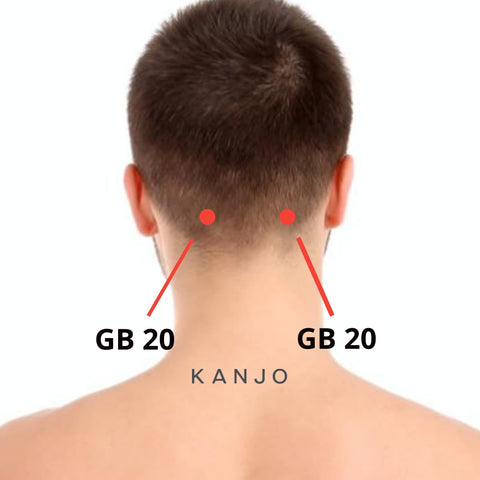Pain in the shoulder blade area can be caused by a number of factors, including muscle strain, bone, or joint-related problems. The pain is often experienced when lifting heavy objects or while performing overhead activities.
There are many reasons why someone may experience pain behind the shoulder blade. Some common causes include poor posture, repetitive motions, and lack of flexibility. There are several treatment options available to help alleviate shoulder blade pain.
This article will explore the causes of shoulder blade pain, as well as the various treatment options available. We will also look at how to prevent shoulder blade pain from occurring in the first place.

What are the Most Common Causes of Pain Behind the Shoulder Blade?
Most reasons for shoulder blade pain are due to weak muscles or a muscle imbalance. This causes the muscles to overcompensate, causing the shoulder blades to become tight and painful.
Here are the common causes of shoulder blade pain:
- Poor Posture - When your body has an improper posture, you tend to hold yourself upright with your head tilted forward, shoulders hunched up, and back rounded. These actions cause your spine to curve and your neck to turn forward, weakening your muscles. This creates tension in your upper back muscles, which then pull on the shoulder blades, leading to pain.
- Repetitive Motion - Repetitive motion is another common cause of shoulder blade pain. If you perform the same movements day after day without changing them, your body becomes accustomed to those motions, and this leads to muscle imbalances and muscle strains from overuse.
- Lack of Flexibility - Lack of flexibility is another common cause of shoulder pain. Tightness in the muscles surrounding the shoulder blades makes them less flexible. If these muscles are not flexible enough, they cannot move freely, resulting in shoulder blade pain.
- Overuse - Overuse injuries occur when you use the muscles too much, either through excessive training or overdoing things like weightlifting. This can lead to muscle strains, ligament sprains, tears, and other types of damage.
- Heart Condition - Certain heart conditions can result in pain around the shoulder blade region. For example, a heart attack can result in pain in the shoulder and upper back, along with shortness of breath. Other heart problems that could lead to shoulder blade pain include an aortic dissection and pericarditis.
- Dislocated Rib - A dislocated rib occurs when one of the ribs moves out of its normal position, resulting in sharp pains behind your shoulder blade. It usually happens when you fall down, get hit hard, or even simply reaching for something above your head.
- Cervical Herniated Disc - Herniated discs happen when there is a bulging disc between the vertebrae in your neck. They commonly occur when you lift heavy weights or push yourself into awkward positions. The pain can radiate down into your shoulder blade area.
- Bone and Joint Problems - Bone and shoulder joint problems such as arthritis can also cause shoulder blade pain. Rotator cuff tears, snapping scapula syndrome, dislocation, and fractures can also cause shoulder blade pain.
- Lung Condition - Some lung issues can be the root cause of shoulder blade pain because the lungs work closely with shoulder muscles. Lung cancer, lung tumors, pulmonary embolism, and pneumothorax are all examples of conditions that could result in pain in the shoulder blade region.
How to Relieve the Pain Under Your Shoulder Blade at Home
Treatments for shoulder blade pain include non-invasive methods that can be done at home, as well as invasive methods like surgery. Treatment options depend on what’s causing your shoulder blade pain and severity.
Rest Your Upper Back from Activity

If you suffer from shoulder blade pain, it’s important to take time off from any strenuous activity. Resting your upper back will help reduce your stress levels and prevent further injury to your shoulders.
You should avoid lifting anything heavy or working out until your shoulder blade pain has subsided. How long you should rest will depend on your age or health history.
Rest should be combined with other at home options below to recover more quickly.
Hot and Cold Treatment
When you first experience pain, ice packs will help reduce inflammation and swelling to relieve pain.
You should apply ice directly to the painful area for 20 minutes three times a day for the first 2-3 days. Do not place ice directly against the skin. Use a towel to prevent the ice from touching your skin.
Heat treatments are often followed up after the initial cold treatment to reduce pain. Heat helps relax tight muscles and increases blood flow throughout the area.
Applying heat pads to the affected areas for 20-30 minutes two to three times a day to relax the muscles.
Massage Therapy

A massage therapist can use their hands, fingers, elbows, knees, feet, or thumbs to rub away tension in your shoulder blade region. Massage can provide relief from muscle tension and soreness.
Massaging muscles surrounding your shoulder blade, like the upper back and shoulder, will help ease your pain too.
OTC Medication
Over the Counter (OTC) medications can be used to treat pain for short-term relief. These drugs come without the need for a prescription by a doctor.
Some anti-inflammatory medication options include ibuprofen (Advil), acetaminophen (Tylenol), naproxen (Aleve), and others.
Acupressure
This ancient Chinese practice involves applying firm pressure to stimulate acupressure points along energy pathways called meridians. Acupressure is helpful for relieving pain in the shoulder blade area.
These pressure points can help with shoulder blade pain and surrounding areas:
- Gallbladder 20 (GB 20) - This pressure point is found at the base of your skull on the left and right sides of the neck.

- Gallbladder 21 (GB 21) - Located between the base of the neck and the end of the shoulder, on both shoulders.

- Large Intestine 10 (LI 10) - Bend your arm 90 degrees. You can find this point on the outside of your forearm 3 finger widths below your elbow crease.

- Triple Energizer 3 (TE 3) - This pressure point is easy to find on the back of your hands between the pinky and fourth finger.

- Luo Zhen - This acupressure point is also found on the back of both hands. It's located in the crease between the second and third fingers.

Two acupressure products to help apply pressure and massage the pressure points for shoulder blade pain are the Kanjo Acupressure Ball and Kanjo Acupressure Mat.
Stretching and Exercising

Stretches and exercises can help loosen tight muscles and improve flexibility to treat shoulder blade pain and prevent further injuries.
To treat shoulder blade pain, it's also important to strengthen the surrounding muscles in your shoulder and upper back, as well as abdomen muscles. Good exercises to do at home include push ups and sit ups. Yoga also offers an effective low-impact exercise option.
For more chronic pain in the shoulder blade region, you can work with a physical therapist to create a stretch and exercise plan for your specific pain. Your doctor will be able to recommend if physical therapy is right for your situation.
Surgery
If you have tried all of these methods and still feel pain in the shoulder blade, surgery can be a treatment option. Surgery should only be considered if other treatments haven't helped relieve your symptoms.
Surgical procedures may be required if the underlying cause of the shoulder blade pain requires surgery. If the cause of your pain is due to cancer, then surgery, chemotherapy, or radiation may be recommended.
Your doctor may recommend one of several types of surgeries depending on what's causing your pain.
When Should You See a Doctor About Shoulder Blade Pain?

You should see your doctor if you're experiencing persistent pain in the shoulder blade and/or surrounding areas. Your doctor can order blood tests, imaging tests, x-rays, and other diagnostic tests to determine underlying causes for your pain.
See your doctor if you experience any of the following:
- Acute, severe pain in the shoulder blade or surrounding areas, including chest pain.
- Shoulder blade pain that lasts longer than 3 to 4 weeks.
- Persistent pain that gets worse over time, instead of getting better.
- Difficulty sleeping due to the pain.
- Limited range of arm motion.
- Numbness or tingling in your shoulders or arms.
- Other home remedy methods do not help reduce pain.
How to Prevent Pain Behind the Shoulder Blade
To avoid shoulder blade pain, keep your muscles in the surrounding area strong and flexible. Here are the top tips to prevent shoulder blade pain:
- Stretch Out Those Muscles - Stretching out those muscles will make them stronger and less likely to be injured again. Always stretch before and after you exercise.
- Stop When It Hurts - Stop doing activities that hurt your shoulder blades more when they're sore. Instead, it's better to rest them until they get better.
- Proper Posture - Proper posture helps keep your spine aligned properly. It reduces stress on your shoulders and back, and prevents injury. If you sit regularly for work, the Kanjo Back Pain Relief Cushion can help with your ergonomics.
- Get Regular Exercise - Exercise strengthens your body by improving muscle tone and endurance. It also improves blood flow throughout your body, which helps prevent fatigue and stiffness.
Because many of the shoulder blade pain underlying causes are due to other areas of your body, it's important to stay healthy and fit overall.
Pain in the Shoulder Blade Final Thoughts
Shoulder blade pain should be treated early so that it doesn't become severe. Treatment options vary based on the source of the pain. While some people recover from shoulder blade pain without treatment, others require surgical intervention.
If the pain is affecting your daily activities, be sure to see a doctor or specialist.
Pain in the Shoulder Blade FAQs
What does your back hurting behind your right shoulder blade mean?
If there is pain behind your right shoulder blade, it could be due to muscle strain or an injury. This can happen when you lift heavy objects, push yourself too hard, or fall down. The pain could also be from a gallbladder or liver problem, including inflammation and gallstones.
What organ is behind your right shoulder blade?
The liver is located behind and under your right shoulder blade. The liver is the largest solid organ and is responsible for removing toxins from your body. It also produces bile to help digest fats and proteins, as well as break down alcohol and drugs.
What organ is under your left shoulder blade?
The spleen is located under your left shoulder blade. The spleen helps control red blood cell and white blood cell levels, and helps fight infections. If the spleen isn't working correctly, your immune system will be compromised. That can lead to anemia, bleeding, bruising, and an increased infection risk.
When I take a deep breath, my right shoulder blade hurts?
If your right shoulder blade hurts when you take a deep breath, it could be due to a muscle strain from a recent injury or overuse. In more serious cases, it could be due to pleurisy or another chest infection. Sharp pains could be pleurisy, an infection of lung tissues that causes chest pains and breathing difficulties. It's best to seek medical advice if you have issues breathing, including a shortness of breath.
Does stress cause shoulder blade pain?
Emotional and physical stress can cause shoulder blade pain. Stress makes your muscles tense up and leads to pressure on your back, neck, and shoulders. As pressure increases, your body's posture and alignment changes. When this happens, you will experience more shoulder blade pain.
What are the symptoms of a pinched nerve in the shoulder blade?
Symptoms of a pinched nerve in your shoulder blade will usually cause a sharp pain in one of the shoulders. The pain and discomfort may radiate to other parts of the shoulder and neck, including leading to headaches. You may also experience tingling and numbness in your shoulder, back, and arms. It will feel similar to your arm falling asleep.
Sources:
- Healthline: https://www.healthline.com/health/shoulder-blade-pain
- Spine Health: https://www.spine-health.com/blog/7-possible-causes-pain-under-your-shoulder-blade
- Very Well Health: https://www.verywellhealth.com/shoulder-blade-pain-possible-causes-and-diagnosis-2248942
- University of Utah: https://healthcare.utah.edu/orthopaedics/specialties/shoulder-pain/when-to-see-a-doctor.php
- Medical News Today: https://www.medicalnewstoday.com/articles/upper-right-back-pain
- Columbia Surgery: https://columbiasurgery.org/liver/liver-and-its-functions
- Healthline: https://www.healthline.com/health/pinched-nerve-shoulder-pain
